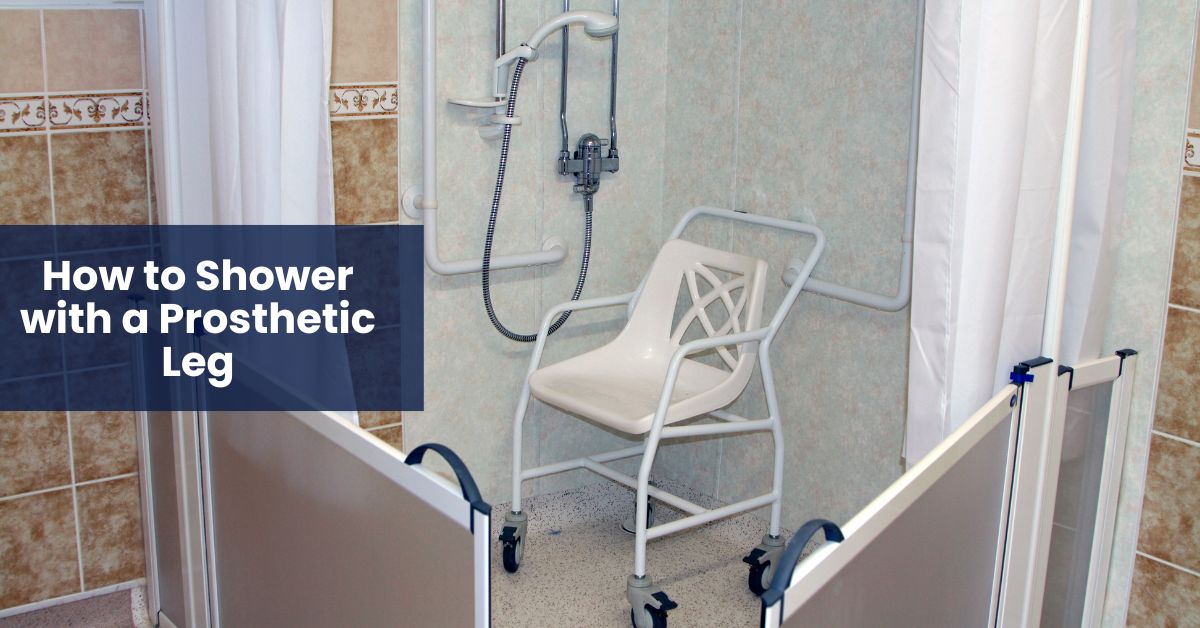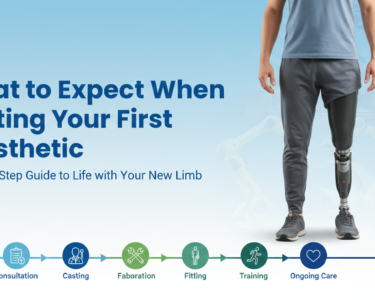One of the most common questions people ask after getting a prosthetic leg is: “Can I wear my prosthesis in the shower?” It’s a very practical concern—after all, bathing is part of everyday life. The short answer is: usually not with a regular prosthetic leg, but the good news is that there are safe options and smart alternatives available.
Adjusting to life with a prosthetic limb involves learning how to navigate many day-to-day tasks in new ways. Activities that once felt routine—like walking, standing, or bathing—can require a bit more planning and adaptation. It’s normal to have questions or concerns, especially when it comes to something as essential as personal hygiene.
Many people find the idea of removing their prosthesis before showering a little intimidating at first. You might wonder how to stay balanced, how to feel safe in a wet environment, or whether you’ll need assistance. The truth is, you’re not alone—and thousands of prosthetic users face the same questions every day.
Fortunately, with the right tools, a little guidance, and perhaps a few changes to your routine, you can shower safely and independently. From waterproof prosthetic options to helpful bathroom aids like shower chairs and grab bars, there are multiple ways to make your bathing experience both comfortable and worry-free.
In this article, we’ll explore whether or not you can shower with your current prosthesis, what alternatives are available, and how to maintain your hygiene routine without damaging your device—or risking your safety.
Let’s take a closer look at what you need to know.
Can You Wear a Regular Prosthetic Leg in the Shower?
In most cases, no, you should not wear your everyday prosthetic leg while showering. Standard prosthetic legs are not waterproof. Moisture can damage the metal parts, weaken the joints, or even cause the prosthetic socket to loosen. Not to mention, wet surfaces can increase your risk of slipping.
Unless your prosthesis is specifically made for water use, it’s best to remove it before showering. This will help extend the life of your limb and keep you safe from any unexpected issues.
Are There Waterproof or Shower-Safe Prosthetic Legs?
Yes! Some prosthetic legs are specially designed for use in water. These are commonly known as waterproof prosthetic legs or shower legs. They’re made with water-resistant materials like plastic, stainless steel, or titanium and are built to handle wet environments like showers, pools, and beaches.
People who live in humid areas or regularly go swimming often choose to get a second prosthesis just for water use. A waterproof leg can give you more independence and peace of mind when it comes to bathing or doing tasks like washing clothes or gardening with a hose.
What Can You Do If You Don’t Have a Waterproof Prosthesis?
If you don’t have a waterproof prosthetic leg, don’t worry—there are still safe and practical ways to shower:
- Use a shower chair or bench: This allows you to sit comfortably and bathe without wearing your prosthesis. It also reduces the risk of slipping.
- Install grab bars: These help with balance and stability as you move in and out of the shower area.
- Non-slip mats: Place anti-skid mats on the bathroom floor to prevent slipping while standing or moving around.
- Use a prosthetic leg cover (if needed): Some people use special waterproof covers if they need to briefly wear their prosthesis near water. However, this is not usually recommended for regular showering.
Special Considerations for Showering with a Prosthetic Leg
- Always check with your prosthetist: Before exposing any part of your prosthesis to water, speak with your prosthetist. They’ll help you understand what your specific leg can or cannot handle.
- Avoid long-term water exposure: Even if a part of your prosthesis seems water-resistant, prolonged water exposure may still cause damage over time.
- Dry everything thoroughly: After bathing, dry your residual limb and any part of your prosthesis that may have come into contact with moisture to prevent skin irritation or mold buildup.
Will Showering Damage My Prosthetic Leg?
Yes, it can—if it’s not waterproof. Standard prosthetic legs are not made to withstand water. Over time, water can damage the internal parts, reduce the limb’s overall lifespan, and make it unsafe to use. That’s why it’s important to avoid water exposure unless the limb is specifically designed for it.
Even sweat or damp bathroom floors can affect the condition of your limb if not cleaned and dried properly. Routine cleaning and care are just as important as avoiding direct water exposure.
Tips to Make Showering Easier and Safer
Showering with a prosthetic leg—whether you’re removing it or using a waterproof version—requires some extra care. Here are some practical safety tips to help make your shower routine smoother, safer, and more comfortable:
1. Use Non-Slip Mats
Place non-slip mats both inside and outside the shower to prevent slipping on wet surfaces. These mats provide stability when stepping in or out, especially when not wearing your prosthesis.
2. Install Grab Bars
Wall-mounted grab bars near the shower entrance and inside the stall or tub can give you extra support and confidence while standing or moving. Make sure they’re securely fixed and at a comfortable height.
3. Shower Chair or Bench
A shower chair or waterproof bench can be a game-changer if you’re showering without your prosthesis. Sitting down reduces the risk of falls and helps you maintain balance while washing.
4. Keep a Towel Close By
Have a towel within arm’s reach of the shower so you can dry off quickly before moving around. Wet floors and skin can increase your chances of slipping.
5. Footwear with Grip
Keep a pair of rubber-soled slippers or shoes near the shower entrance. Wearing these right after stepping out can help prevent slipping on tiled or smooth floors.
6. Use a Handheld Showerhead
A handheld showerhead gives you better control over water direction and allows you to stay seated while washing. This can make rinsing off easier and more efficient.
7. Keep Essentials Within Reach
Place soap, shampoo, and other toiletries in easily accessible holders at waist or chest level to avoid bending or reaching, which can throw off your balance.
8. Have a Communication Plan
If you live alone, it’s a good idea to keep a waterproof phone nearby or use a medical alert button. In case you feel dizzy or need assistance, help can be contacted quickly.
9. Dry the Floor Immediately
After bathing, make sure to wipe up excess water on the floor. Even if you step out carefully, leftover puddles can pose a hazard.
10. Practice Transferring Safely
If you’re removing your prosthetic leg, practice safe transfers in and out of the shower area using the support equipment mentioned. Taking your time and using both hands for balance helps prevent falls.
Showering with Confidence
So, can you shower with a prosthetic leg? Not with your standard one—but that doesn’t mean you’re out of options. From investing in a waterproof prosthesis to setting up a safer bathroom environment, there are plenty of ways to regain control and confidence in your daily routine.
What matters most is finding a system that supports your comfort, safety, and independence. Whether you choose to shower without your prosthesis using a chair and grab bars, or upgrade to a waterproof model, you have the power to create a solution that works for you.
Remember, it’s okay to take things slow and adapt your routine as you go. Each person’s experience with a prosthetic limb is unique, and there’s no one-size-fits-all answer. With a bit of planning and the right tools, even essential tasks like bathing can become manageable—and even empowering.
Be patient, be kind to yourself, and know that support and resources are always available.
Disclaimer:
The information provided in this blog is for general educational purposes only and should not be considered medical advice. Always consult with your doctor, prosthetist, or physiotherapist before making decisions related to your health, rehabilitation, or prosthetic use. Every individual’s condition and needs may vary.








